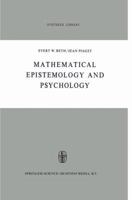Drone Pilot: 6x9 Drones - dotgrid - dot grid paper - notebook - notes
Select Format
Select Condition 
Book Overview
You are looking for a great notebook?
Lucky you found us
This fashionable themed notebook leaves you all freedom in creating every content you need and is a faithful companion in your everyday life. This individual design is rounded off by 120 pages of cream-white colored paper and a beautiful matt premium cover.
The notebook has been designed by independent designers who you will support with every purchase. A great gift idea for the birthday of friends or as a gift for a special person.
Also check out our other journals, maybe you'll find another one that you like as well.
Format:Paperback
Language:English
ISBN:1699255091
ISBN13:9781699255094
Release Date:October 2019
Publisher:Independently Published
Length:122 Pages
Weight:0.42 lbs.
Dimensions:0.3" x 6.0" x 9.0"
More by J. Piaget
Customer Reviews
7 customer ratings | 5 reviews
There are currently no reviews. Be the first to review this work.






















